|
|
Happy Independence Day!
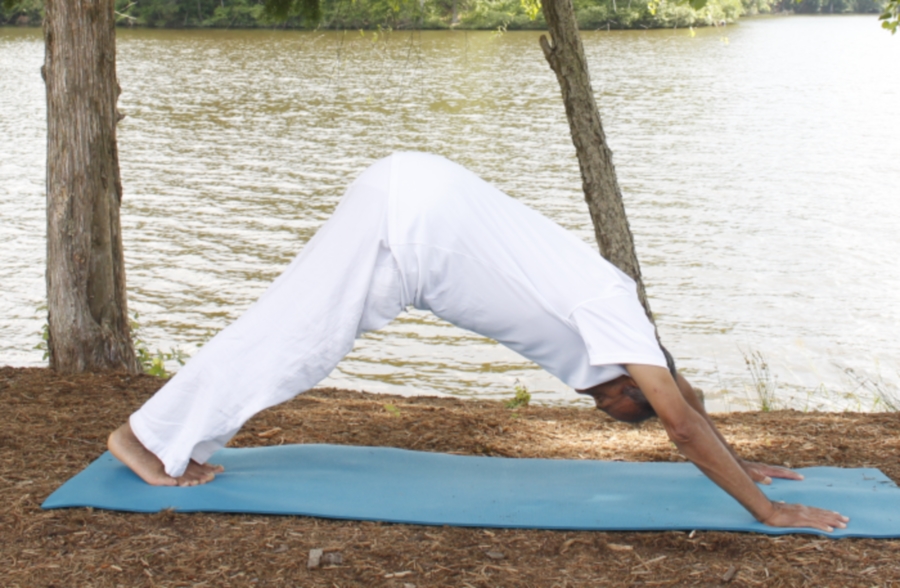 Downward Facing Dog
Come celebrate 4th of July with me! Treat yourself to the gift of a FREE yoga class on Independence Day:
-
What: FREE yoga class
-
When: Monday, July 4, 2016
- Time: 10:00 AM – 12:00 PM
-
Location: Integral Yoga Studio, 4000 Bearcat Way, Suite 102, Morrisville, NC 27560
- Register here
Continue reading »
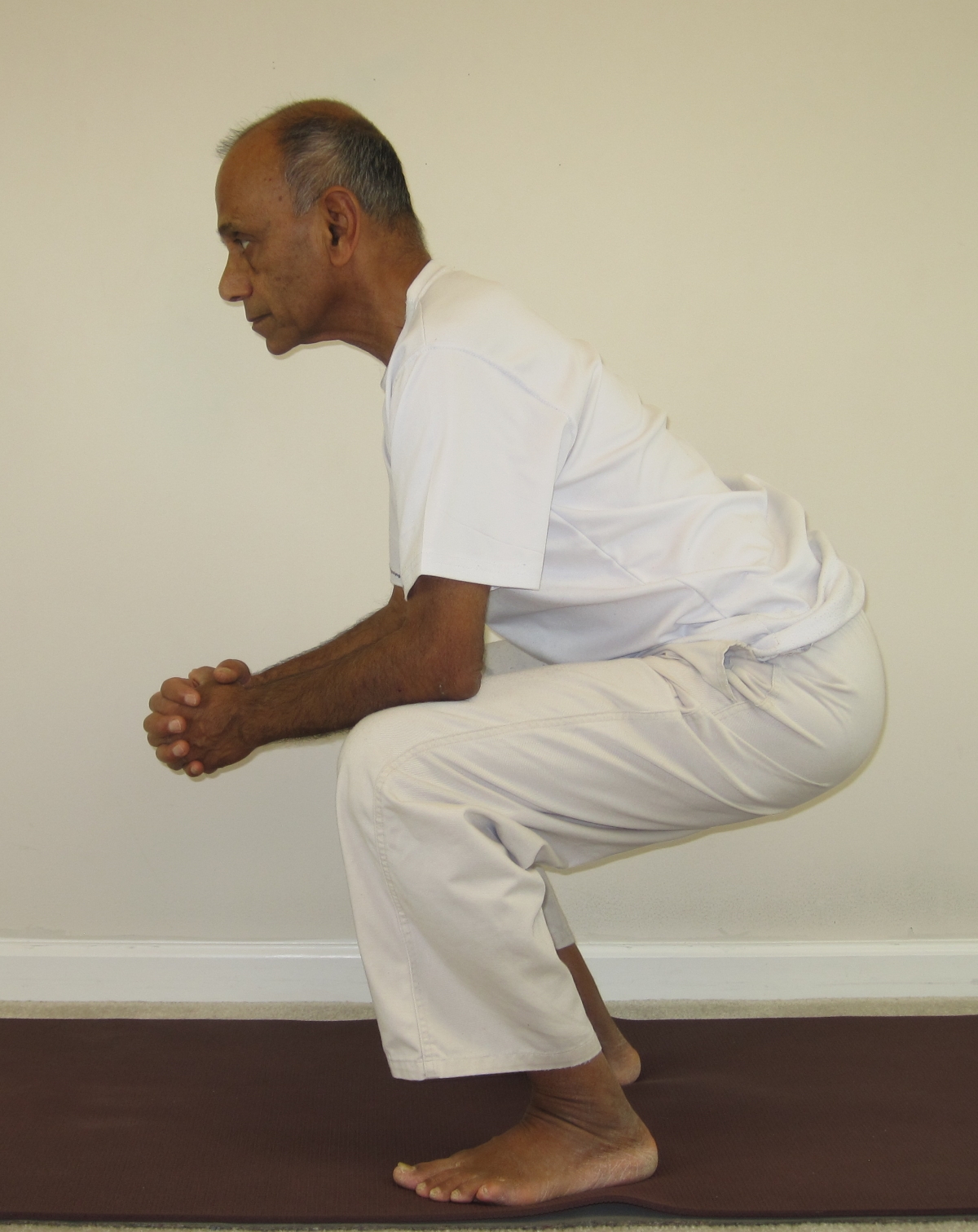 Virtual Chair
Problems with knees and low back pain are perhaps two of the most important reasons why people come to yoga for help. In this article, I would like to present a few simple poses that can help relieve knee pain and also make the knees and the surrounding muscles – hamstrings, quads, calves etc. stronger. When the muscles surrounding the knees are strong and flexible, they can support the knees much more effectively, thus preventing injury and pain in the knees.
If you already have any kind of knee pain, please try to practice under the guidance of a yoga teacher. Be careful not to engage in any movement that causes more pain or discomfort as that can further aggravate your situation.
I hope you will enjoy practicing with the video.
Continue reading »
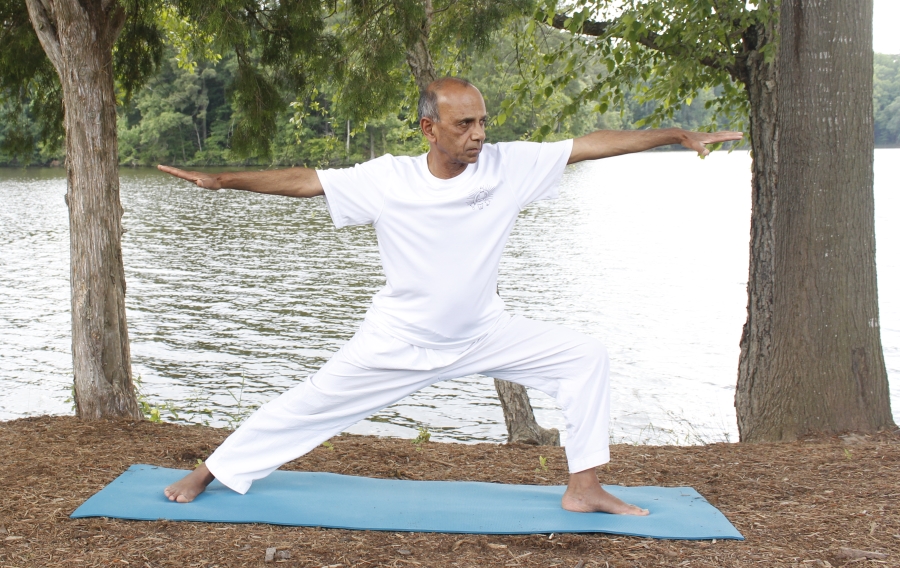 Virabhadrasana (Warrior2)
I am pleased to announce the next 21-day Yoga Immersion program. The past programs have been very well received by all the participants. For most of them, it has been truly a life-transforming experience. I invite you to join me on this exciting and deeply rewarding 21-day yoga journey. Here are the particulars:
- What: 21-day yoga immersion
- When: Monday, July 11- Sunday, July 31, 2016
- Time: 6:00 AM – 7:30 AM
- Where: 4000 Bear Cat Way, Suite 102, Morrisville, NC 27560
- Cost: $125
Continue reading »
In an earlier article, I discussed the different pranayama variables that have been given by Patanjali in the Yoga sutras. Based on these guidelines provided by Patanjali, and using different permutations and combinations of these variables, a large number of breathing techniques have evolved over time. One of the main sources of information on various pranayama techniques is the "Hatha Yoga Pradipika", a classic yoga text which was written by Swatma Ram about a thousand or so years ago. This contains a complete section on Pranayama and lists a variety of pranayama techniques.
In the yoga classes that I teach and also in the special 14-day pranayama intensive programs, I cover several different pranayama practices. You may like to visit the pranayama page on my blog to get a list of these techniques, as well as links to detailed descriptions on the blog. However, since one can only allocate a certain limited amount of time on a regular, daily basis, I recommend a basic pranayama routine which should form the core of your practice. The basic routine should be practiced on a daily basis, adding other practices as and when you can allocate extra time for your practice.
Continue reading »
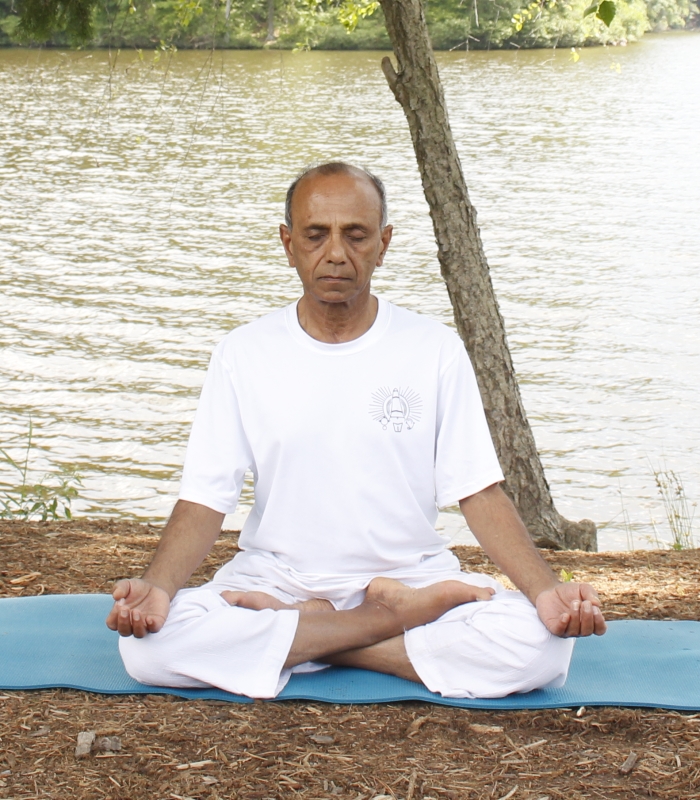 Padmasana (Lotus Pose)
I am pleased to announce the next Meditation Intensive. In this program, I plan to discuss the basic concepts of meditation and practice several of the meditation techniques. Most of the information that I will be sharing is based on the concepts discussed in Patanjali’s Yoga Sutras and related classical yoga texts.
No prior pranayama or meditation experience is required.
Here are the particulars:
- What: 14-day Meditation Intensive
- When: Monday, June 6 – Sunday, June 19, 2016
- Time: 6:00 – 7:30 AM
- Location: 4000 Bearcat Way, Suite 102, Morrisville, NC 27560
- Daily Routine: Light stretching (10-15 minutes), Pranayama (15 min), Relaxation (15 min), Meditation – discussion and practice (45 min)
- Commitment: A firm commitment to follow this schedule and attend every day
- Fee: $90
- To register: fill out the registration form, providing information in all the fields, and submit it online
Strongly recommended
- Light,’sattvic’, nutritious, VEGETARIAN food
- No alcohol, drugs, tobacco or any other item of similar nature
- A personal commitment to continue the practice after the program is over
Please visit here for more details…
Do not hesitate to contact me if you have any questions. I look forward to your participation.
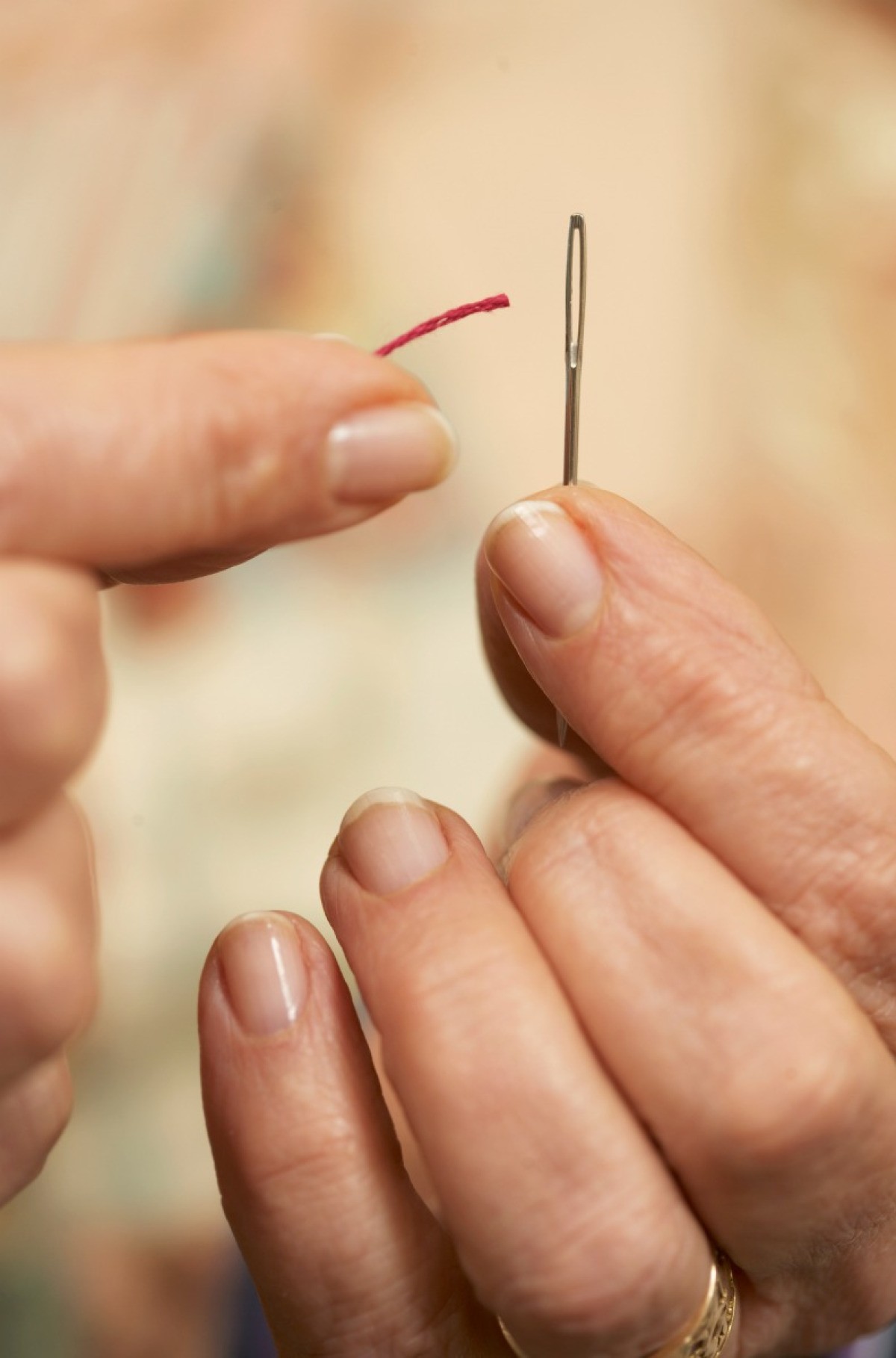 Threading a needle
Ever wondered as to which of the physiological functions in humans are both voluntary and involuntary? On a brief reflection on this question, you will come up with the answer – breathing and blinking of the eyes. Involuntarily, breathing happens 24 hours of the day, without our knowledge or intervention. However, it is one of the key physiological functions that can also be modified voluntarily.
The great ancient yogis recognized this fact about the breath. As they always were experimenting with the natural phenomena around them, they must have decided to experiment with the variability of their breath. They realized that the breath can be varied in multiple ways – it can be made short, long, loud, soft, forced, unforced etc. In addition, one could even stop the breath for a certain amount of time. Not only could the breath be varied in all these ways, they also found to their great delight that each one of these variations also provided great benefits at multiple levels.
We are all familiar with instances when our emotions can control the breathing rhythm. For example, when we are very angry or agitated, our breathing is very uneven, fast and shallow. When we are very sad, we breathe uneven, sobbing breaths. When we are calm or engrossed in some pleasant activity, like listening to some soulful music, our breathing is very gentle, even and soft. When we are trying to thread a needle, we naturally suspend our breathing as we attempt to move the thread through the hole. These examples demonstrate that our breathing pattern is a good indicator of the state of the mind that we are experiencing at a given time.
Continue reading »
Most people tend to practice yoga with the main objective of achieving physical well-being. As a result they focus only on the "asana" (physical postures) part of yoga practice. If we go by the eight limbs of yoga defined by Patanjali in his Yoga Sutras, then asana is only one of those eight limbs. In fact, if we dig a little deeper, we realize that the word asana refers ONLY to a sitting posture. The word "asana" is derived from the Sanskrit root "aas (आस्)" which literally means "to sit". The word asana means either the posture you sit in or the seat that you sit upon. The whole series of physical postures were developed so the body could be made strong and flexible enough so that one could sit in a meditative posture for long periods of time. As per Patanjali, it is only through the practice of meditation that one can attain a perfectly calm state of the mind, which is the goal of yoga.
When these postures were developed, instead of coining a new name for them, the yogis decided to keep the same name "asana" for these postures as well, which Patanjali used for a sitting posture. This is how the whole science of Hatha Yoga evolved. The text that is most commonly referenced for all current yoga practices is the Hatha Yoga Pradipika by Swatmarama.
Continue reading »
"How hard it is to control the mind! Well, it has been compared to the maddened monkey. There was a monkey, restless by his own nature, as all monkeys are. As if that were not enough some one made him drink freely of wine, so that he became still more restless. Then a scorpion stung him. When a man is stung by a scorpion, he jumps about for a whole day; so the poor monkey found his condition worse than ever. To complete his misery a demon entered into him. What language can describe the uncontrollable restlessness of that monkey? The human mind is like that monkey, incessantly active by its own nature; then it becomes drunk with the wine of desire, thus increasing its turbulence. After desire takes possession comes the sting of the scorpion of jealousy at the success of others, and last of all the demon of pride enters the mind, making it think itself of all importance. How hard to control such a mind!" – Swami Vivekananda
This famous quote from Swami Vivekananda sums up the state of our mind – incessantly restless! There is constantly something or the other happening in the mind – thoughts, worries, anxieties, likes, dislikes, variety of emotions, negative feelings, positive feelings, planning, scheming …. and the list can go on. The change in the mind is continuous. This constant change or fluctuation is what has been termed a "vritti" by sage Patanjali in the Yoga Sutras.
Continue reading »
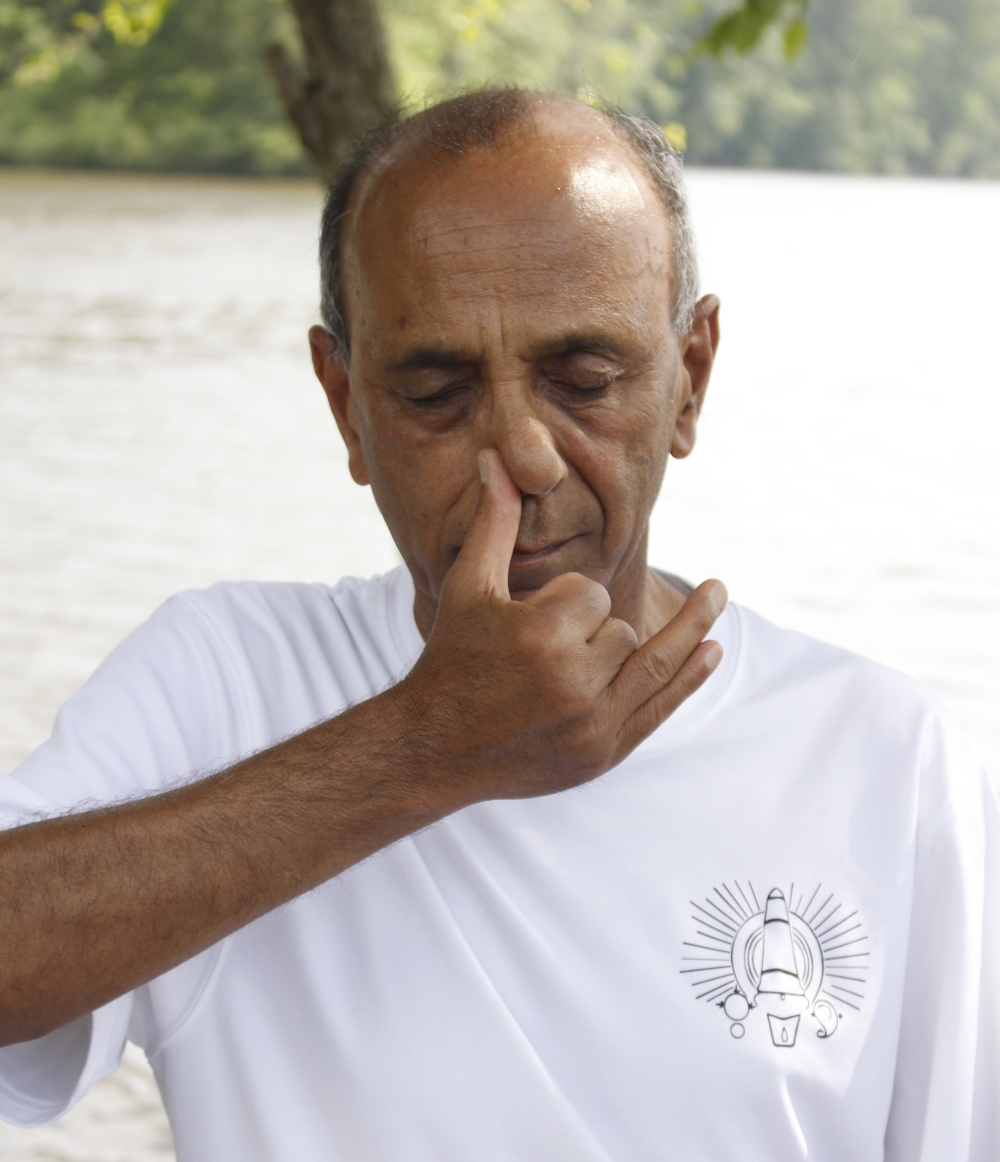 Vishnu Mudra
I am pleased to announce the next Pranayama intensive. In this program, we will be practicing some of the main pranayama techniques given in our ancient yoga texts. I will also discuss the underlying concepts in the practice of pranayama and all the wonderful benefits that the practice can bring us.
No prior pranayama or meditation experience is required.
Here are the particulars:
- What: 14-day pranayama intensive
- When: Monday, May 9 – Sunday, May 22, 2016
- Time: 6:00 – 7:30 AM
- Location: 4000 Bearcat Way, Suite 102, Morrisville, NC 27560
- Daily Routine: Light stretching (10-15 minutes), Pranayama (40 min), Relaxation (15 min), Yoga philosophy/meditation (15-20 min)
- Commitment: A firm commitment to follow this schedule and attend every day
- Fee: $90
- To register: fill out the registration form, providing information in all the fields, and submit it online
Continue reading »
In this segment, I will take you through a sequence of guided meditation. In this meditation the objective is to disengage the mind from any influence from the five senses. This will help us focus the mind inward which will help us get into a deeper state of meditation. This state of the mind is called Pratyahara, which in one of the eight limbs of yoga called "Ashtanga Yoga" in Patanjali’s Yoga Sutras. I will guide you through a sequence wherein we will connect with each of the five senses one at a time and then disengage from it. Click on the "play" button below to practice with the audio. I am also giving below the text transcript of the audio that you can use for your meditation.
Sit in any comfortable seated posture, with the spine upright and vertical. Keep the eyes closed.Try to pull the neck up, rooting the tail bone down so the spine feels elongated. Try to maintain the head, neck and trunk in vertical alignment. Make any adjustments to so the spine and the body feel comfortable. Relax the hands, arms and shoulders. Relax the neck muscles. Now, soften and relax the facial muscles. Begin to watch your breath as you inhale and exhale, just observing the flow of breath at the tip of the nose, without modifying your natural breathing rhythm.
Continue reading »
|
Video DVD
Yoga with Subhash (asana and pranayama)
- Basic asana sequence (~50 min) ($18)
- Pranayama/Meditation (~35 min) ($12)
- Set of above two ($25)
Video recording of special programs offered in the past
(Links to YouTube videos will be provided)
- 21-day yoga immersion - $40
- 7-day hip opening intensive - $20
- 14-day meditation intensive - $30
- 14-day pranayama intensive - $30
- 7-day hamstring/quad intensive - $20
- 14-day Level 2 yoga intensive - $35
Payment options:
- cash, check, Zelle (use subhashmittal@gmail.com) or Venmo (use 9199269717)
- PayPal (go to bottom of page) (add $5 to the fee listed above)
Please contact me if you would like to buy.
|






Recent Comments